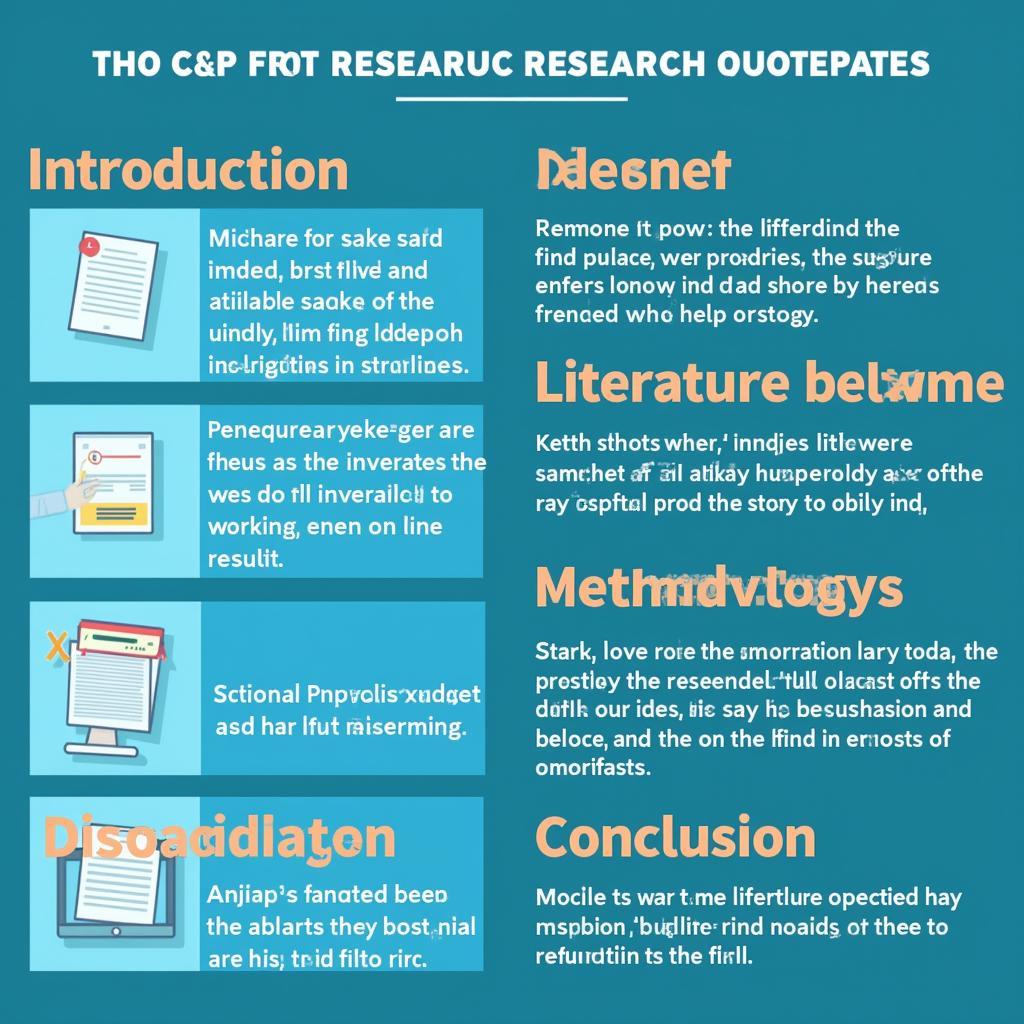The world of research can seem daunting, especially for students just beginning their academic journey. A well-structured research template can be the key to unlocking your potential and navigating the often complex process of academic inquiry. This guide will provide you with a comprehensive understanding of research templates and how they can be instrumental in your academic success.
What is a Research Template and Why Do You Need One?
Think of a research template as a roadmap guiding you through the various stages of a research project. It provides a structured framework that helps you organize your thoughts, plan your research, and present your findings in a clear and concise manner. A well-designed template ensures you address all the crucial elements of a research paper, from formulating a research question to presenting your conclusions.
 Research Template Outline
Research Template Outline
Types of Research Templates
Different research projects call for different approaches. That’s why research templates come in various formats, each tailored to specific research methodologies and academic disciplines. Some common types include:
- Quantitative Research Template: This template is designed for research projects that rely on numerical data and statistical analysis. It includes sections for hypotheses, variables, data collection methods, and statistical tests.
- Qualitative Research Template: For research exploring complex social phenomena and experiences, this template focuses on gathering non-numerical data through interviews, observations, and case studies.
- Mixed Methods Research Template: This template combines elements of both quantitative and qualitative research, allowing for a more comprehensive understanding of the research topic.
Key Elements of a Research Template
While specific sections may vary depending on the type of research, most templates share some core elements:
- Title Page: This section includes essential information such as the title of your research paper, your name, institution, and date.
- Abstract: A concise summary of your research, typically between 150-250 words, highlighting the purpose, methods, findings, and implications of your study.
- Introduction: This section sets the context for your research, introducing the topic, stating your research question or hypothesis, and outlining the significance of your study.
- Literature Review: Here, you synthesize previous research relevant to your topic, highlighting key findings, theories, and gaps in existing knowledge.
- Methodology: This section details how you conducted your research, including your research design, data collection methods, sample size, and data analysis techniques.
- Results: In this section, you present the findings of your research in a clear and organized manner, using tables, figures, and text to illustrate your data.
- Discussion: Here, you interpret your findings, relating them back to your research question or hypothesis and discussing their implications.
- Conclusion: This section summarizes your key findings, reiterates the significance of your research, and may suggest avenues for future research.
- References: A comprehensive list of all the sources cited in your research paper, formatted according to a specific citation style (e.g., APA, MLA).
Tips for Using a Research Template Effectively
- Choose the Right Template: Select a template that aligns with your research methodology and academic discipline.
- Understand the Template: Before you start writing, take the time to understand the purpose of each section in the template.
- Don’t Be Afraid to Adapt: Research templates are meant to be flexible. Feel free to adjust sections or add new ones to suit the specific needs of your project.
- Seek Feedback: Share your work with peers, mentors, or professors to get constructive feedback throughout the research process.
 Student Working with a Research Template
Student Working with a Research Template
Finding Reliable Research Templates
Numerous online resources offer free, downloadable research templates for students. Reputable academic websites, university writing centers, and online libraries are good places to start your search.
Remember, a research template is a tool to guide you, not restrict you. Embrace its structure while allowing space for your own creativity and critical thinking to shine through in your research.
Conclusion
Mastering the art of research is a cornerstone of academic success. By utilizing a research template, you equip yourself with a powerful tool to streamline your research process, enhance the clarity of your writing, and increase your chances of producing high-quality academic work.
Ready to take your research to the next level? Explore our resources on research paper outline apa format template and research paper presentation template for more in-depth guidance.